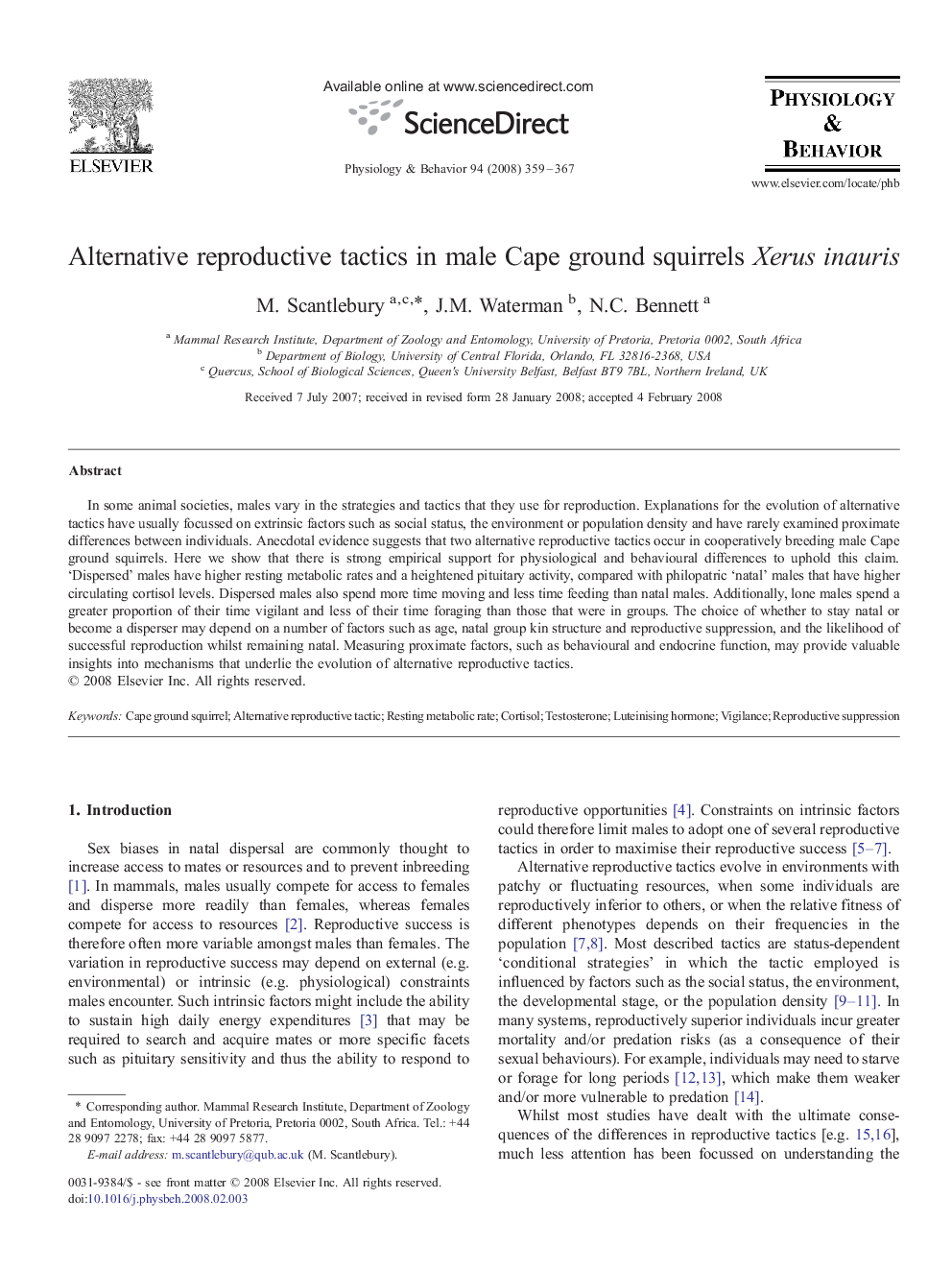| Article ID | Journal | Published Year | Pages | File Type |
|---|---|---|---|---|
| 2845415 | Physiology & Behavior | 2008 | 9 Pages |
In some animal societies, males vary in the strategies and tactics that they use for reproduction. Explanations for the evolution of alternative tactics have usually focussed on extrinsic factors such as social status, the environment or population density and have rarely examined proximate differences between individuals. Anecdotal evidence suggests that two alternative reproductive tactics occur in cooperatively breeding male Cape ground squirrels. Here we show that there is strong empirical support for physiological and behavioural differences to uphold this claim. ‘Dispersed’ males have higher resting metabolic rates and a heightened pituitary activity, compared with philopatric ‘natal’ males that have higher circulating cortisol levels. Dispersed males also spend more time moving and less time feeding than natal males. Additionally, lone males spend a greater proportion of their time vigilant and less of their time foraging than those that were in groups. The choice of whether to stay natal or become a disperser may depend on a number of factors such as age, natal group kin structure and reproductive suppression, and the likelihood of successful reproduction whilst remaining natal. Measuring proximate factors, such as behavioural and endocrine function, may provide valuable insights into mechanisms that underlie the evolution of alternative reproductive tactics.
